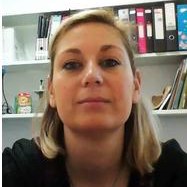Surface Acoustic Wave Microfluidics
A special issue of Micromachines (ISSN 2072-666X).
Deadline for manuscript submissions: closed (31 December 2016) | Viewed by 21965
Special Issue Editors
Interests: built-in self testing; built-in self repair; microsensors; machine learning; microsystems
Special Issues, Collections and Topics in MDPI journals
Interests: ultrasonic sensors; ultrasonic transducers fabrication; micro-fabrication; transducer arrays; acoustofluidics; acoustic particle manipulation; piezoelectric materials
Special Issues, Collections and Topics in MDPI journals
Special Issue Information
Dear Colleagues,
The recent addition of surface acoustic wave (SAW) technology onto lab-on-a-chip platforms has opened a new frontier in microfluidics. The advantages provided by such SAW microfluidics are numerous: simple fabrication, high biocompatibility, fast fluid actuation, versatility, compact and inexpensive devices and accessories, contact-free particle manipulation, and compatibility with other microfluidic components. We believe that these advantages enable SAW microfluidics to play a significant role in a variety of applications in biology, chemistry, engineering and medicine. This Special Issue seeks reviews, regular research papers and short communications on: (i) the theory underpinning SAWs and their interactions with particles and fluids; (ii) innovative applications in biology, chemistry, engineering and medicine; (iii) innovative measurement techniques and numerical modelling on SAW-fluid interactions; and (iv) technological or scientific descriptions of examples for commercialisation of surface acoustic wave microfluidics.
Prof. Dr. Marc Desmulliez
Dr. Anne Bernassau
Dr. Baixin Chen
Guest Editors
Manuscript Submission Information
Manuscripts should be submitted online at www.mdpi.com by registering and logging in to this website. Once you are registered, click here to go to the submission form. Manuscripts can be submitted until the deadline. All submissions that pass pre-check are peer-reviewed. Accepted papers will be published continuously in the journal (as soon as accepted) and will be listed together on the special issue website. Research articles, review articles as well as short communications are invited. For planned papers, a title and short abstract (about 100 words) can be sent to the Editorial Office for announcement on this website.
Submitted manuscripts should not have been published previously, nor be under consideration for publication elsewhere (except conference proceedings papers). All manuscripts are thoroughly refereed through a single-blind peer-review process. A guide for authors and other relevant information for submission of manuscripts is available on the Instructions for Authors page. Micromachines is an international peer-reviewed open access monthly journal published by MDPI.
Please visit the Instructions for Authors page before submitting a manuscript. The Article Processing Charge (APC) for publication in this open access journal is 2600 CHF (Swiss Francs). Submitted papers should be well formatted and use good English. Authors may use MDPI's English editing service prior to publication or during author revisions.
Keywords
- Science and technology of SAW microfluidics
- Applications of SAW in microfluidics and nanoelectromechanical systems
- SAW-micro systems technology
- Measurements of SAW-fluid systems and devices
- SAW microtransducers, microactuators and microsensors
- Microcontrollers by SAW
- SAW microfluidics and nanofluidics
- Surface acoustic waves
- Microfluidics







